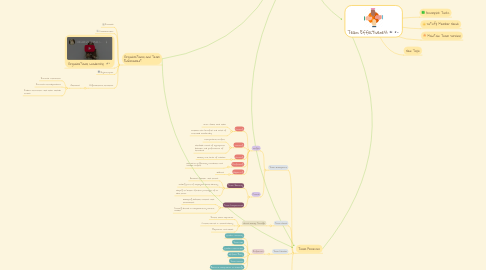
1. Organizational and Team Environment
1.1. Rewards
1.2. Communication
1.3. Organizational Leadership
1.4. Physical Space
1.5. Organizational Structure
1.5.1. Outcomes
1.5.1.1. Increase interaction
1.5.1.2. Increase interdependence
1.5.1.3. Reduce interaction with other outside teams
2. Team Processes
2.1. Team Development
2.1.1. Stages
2.1.1.1. Forming
2.1.1.1.1. Learn about each other
2.1.1.1.2. evaluate the benefits and costs of continued membership
2.1.1.2. Storming
2.1.1.2.1. interpersonal conflict
2.1.1.2.2. establish norms of appropriate behavior and performance of standard
2.1.1.3. Norming
2.1.1.3.1. Develop real sense of cohesion
2.1.1.4. Performing
2.1.1.4.1. learned to efficiently coordinate and resolve conflict
2.1.1.5. Adjourning
2.1.1.5.1. Disband
2.1.2. Process
2.1.2.1. Team Identity
2.1.2.1.1. Becomes familiar with teams
2.1.2.1.2. making part of employee's social identity
2.1.2.1.3. Shaping to better further prototype of an ideal team
2.1.2.2. Team Competencies
2.1.2.2.1. Developing habitual routines with teammates
2.1.2.2.2. Forming shared or complementary mental models
2.2. Team Norms
2.2.1. Norms Develop Through:
2.2.1.1. Initial team experience
2.2.1.2. Critical event's in team's history
2.2.1.3. Experience and Values
2.3. Team Cohesion
2.3.1. Influences
2.3.1.1. Member similarity
2.3.1.2. Team size
2.3.1.3. Member interaction
2.3.1.4. Difficult Entry
2.3.1.5. Team success
2.3.1.6. External competition or challenge
2.4. Team Trust
2.4.1. Types of teams
2.4.1.1. Self-directed Teams
2.4.1.1.1. Autonomy over task decisions
2.4.1.2. Virtual Teams
2.4.1.2.1. Teams have degree of virtuality
2.4.1.3. Team Decision Making
2.4.1.3.1. Constraints on Team Decision Making
2.4.1.3.2. Team Structure
2.4.2. Level of Trust
2.4.2.1. Calculus-Based
2.4.2.1.1. Based on deterrence
2.4.2.2. Knowledge-Based
2.4.2.2.1. Based on predictability and competence
2.4.2.3. Identification-Based
2.4.2.3.1. Based on common mental models and values
3. Team Design
3.1. Task Characteristics
3.1.1. Complex Works
3.1.2. Well Structured Tasks
3.1.3. Task Independence
3.1.3.1. Pooled interdependence
3.1.3.2. Sequential Interdependence
3.1.3.3. Reciprocal Interdependence
3.2. Team Size
3.3. Team Composition
3.3.1. The 5c's
3.3.1.1. Characteristics
3.3.2. Team Diversity
3.3.2.1. Dimensions
3.3.2.1.1. Different background tend to see problems or opportunities in different angle.
3.3.2.1.2. Broader pool of technical competencies
3.3.2.1.3. Provide better representation of the team constituents.

